| Umělec 2005/3 >> SLIDers | Просмотр всех номеров | ||||||||||||
|
|||||||||||||
SLIDersUmělec 2005/301.03.2005 Jana Kalinová | review | en cs de es |
|||||||||||||
|
Barbora Klímová, Pražák Palace, Atrium, Moravian Gallery in Brno, Moravské Square, Brno. June 17 – August 28, 2005
According to artist Barbora Klímová’s instructions, switches were installed on the sodium street lamps on Moravské náměstí, the main square of the Czech Republic’s second city, Brno. They functioned on the basis that makes a light switch on when one approaches a front door or by which owners or occupants of areas forming parts of public places mark their territories. Recently, anybody walking across Brno’s Moravské namestí in the evening or early in the morning might have noticed that some of the lamps suddenly switched off, and after they left the lights in the area would switch on again. Klímová’s installation took place for only one week, the longest possible period of time that could be agreed on with the town council. Exhibition curator, Petr Ingerle, who first walked through the square, and then observed the situation sitting on a bench in the middle of the park, observed three small groups of people walking at about the same time along three foot-paths from outside of the park towards the fountain in the middle. Before they entered the central area, the lamps shut off simultaneously as they were approached. As the place is surrounded by trees, it was completely dark for about a minute. After these groups had met by the fountain, the lamps that had been switched off started lighting up again. This “Spartakiad”-like effect of synchronized lighting did not provoke any immediately noticeable reactions. However, such feelings and reactions do not have their greatest influence at the moment, but they settle in and accumulate gradually. For some time I could only characterize Klímová’s latest project by saying, “I like it a lot.” Since such a reference is more disqualifying than praising, I realized I should justify it here, both to myself and to you. Whenever Barbora and I met over the past six months, it would have been by chance and briefly, but regularly, as Brno is small. We shared our experiences concerning preparations for implementing our public presentations–technical stuff, like “there you go: a crane, an electrician, communications, a building permit, and then the Land Registry;” and impressions. All too frequently we’d start out saying, “Well, what I originally intended was…” On Bára’s part, all such information concerned her intervention in the sphere of public lighting. I knew nothing about the other part of her work before it was presented in the Pražák Palace’s top-floor atrium; in general, there was no information coming from her or anybody associated with it. Whether or not that was a part of a strategy, it was very effective considering the nature of the matter it concerned. The outdoor part of the exhibition existed long before the implementation, in the form of an urban legend. It need only be implemented. Considering the installation can’t be documented in any other way than, say, a photo of illuminated lamps juxtaposed with one with the lamps turned off, one might rightly assume that this installation was designed to be documented by word of mouth alone. Even though the effect of the project could have been better captured by video, the actual documentation of the lighting intervention could not be made, on account of the limitations of video and, most of all, because of the artist herself. The substantial effect artificially evoked by her intervention consists of the various emotions of random passers-by and the objective impressions outside the usual limits of subjectivity. The same feelings invoked by public lighting’s natural imperfections, of which she herself had had first-hand experience, motivated her to evoke them artificially. I consider the reaction to imperfection – something more typical for an urban landscape, that presents processes based on human factor, than for the countryside – one of the fundamental factors motivating the standardization of the qualities achieved by civil-ization. Bára’s work at Pražák was a wall made of large glass panels affixed to a steel construction partitioning the atrium rendering accessible only a third of the space. Together with visitors’ reflections in the glass, the reduced gallery space was packed with people during the exhibition opening. The exposition resembled a line in front of an empty window of a closed shop offering the “latest” to watch your own reflection in the glass as if it all was only about the empty space inside. During the opening, I noticed a visitor wearing headphones standing by a small radio located on a table in the corner of the gallery. He was not sabotaging the speech, he was listening to yet a third part of the project–interviews with contributors of web pages broadcast by a pirate radio station with a range of about five hundred meters around the gallery (paranormal.about.com). The contributors were describing their experiences with a phenomenon called "SLIDers" (Street Lamp Interference) by their American colleagues. According to them, this phenomenon enables some individuals to interfere with the function of machines working on the basis of electromagnetic oscillation, or cause current fluctuation or power failure by their mere presence. And the manifestation of this usually is a street lamp switching off. Art in public spaces is increasingly being reduced to mere advertisements for some individual or event inside a gallery, such as with the regular contamination of Wenceslas Square by objects associated with Art Factory exhibitions. In other settings, where public presentations are a bit more sustainable, the message the art relays could reduced to a single, desperate statement: “I want to tell you that I have something to tell you.” For that, I respect works that do not treat public space like an extended and more exposed exhibition space but work with it as with a material that has qualities endemic to it that inspire the artist.
01.03.2005
Рекомендуемые статьи
|
|||||||||||||
|
04.02.2020 10:17
Letošní 50. ročník Art Basel přilákal celkem 93 000 návštěvníků a sběratelů z 80 zemí světa. 290 prémiových galerií představilo umělecká díla od počátku 20. století až po současnost. Hlavní sektor přehlídky, tradičně v prvním patře výstavního prostoru, představil 232 předních galerií z celého světa nabízející umění nejvyšší kvality. Veletrh ukázal vzestupný trend prodeje prostřednictvím galerií jak soukromým sbírkám, tak i institucím. Kromě hlavního veletrhu stály za návštěvu i ty přidružené: Volta, Liste a Photo Basel, k tomu doprovodné programy a výstavy v místních institucích, které kvalitou daleko přesahují hranice města tj. Kunsthalle Basel, Kunstmuseum, Tinguely muzeum nebo Fondation Beyeler.
|






















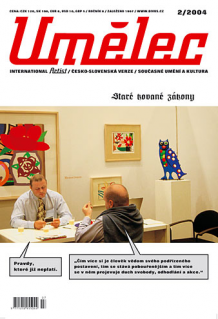




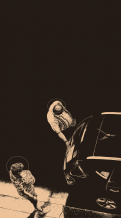
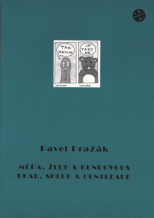
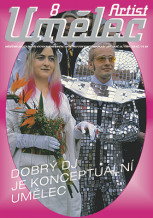
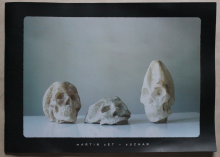


 New book by I.M.Jirous in English at our online bookshop.
New book by I.M.Jirous in English at our online bookshop.
Комментарии
Статья не была прокомментированаДобавить новый комментарий